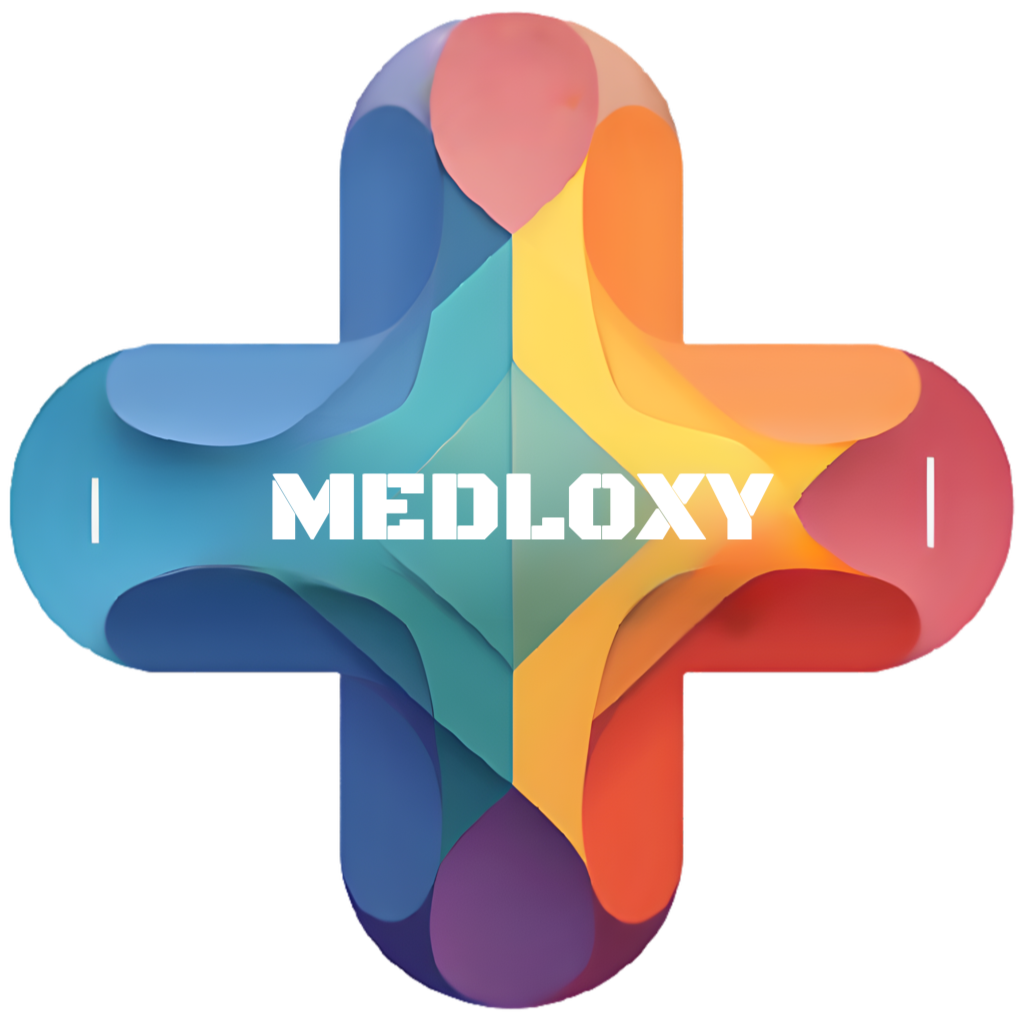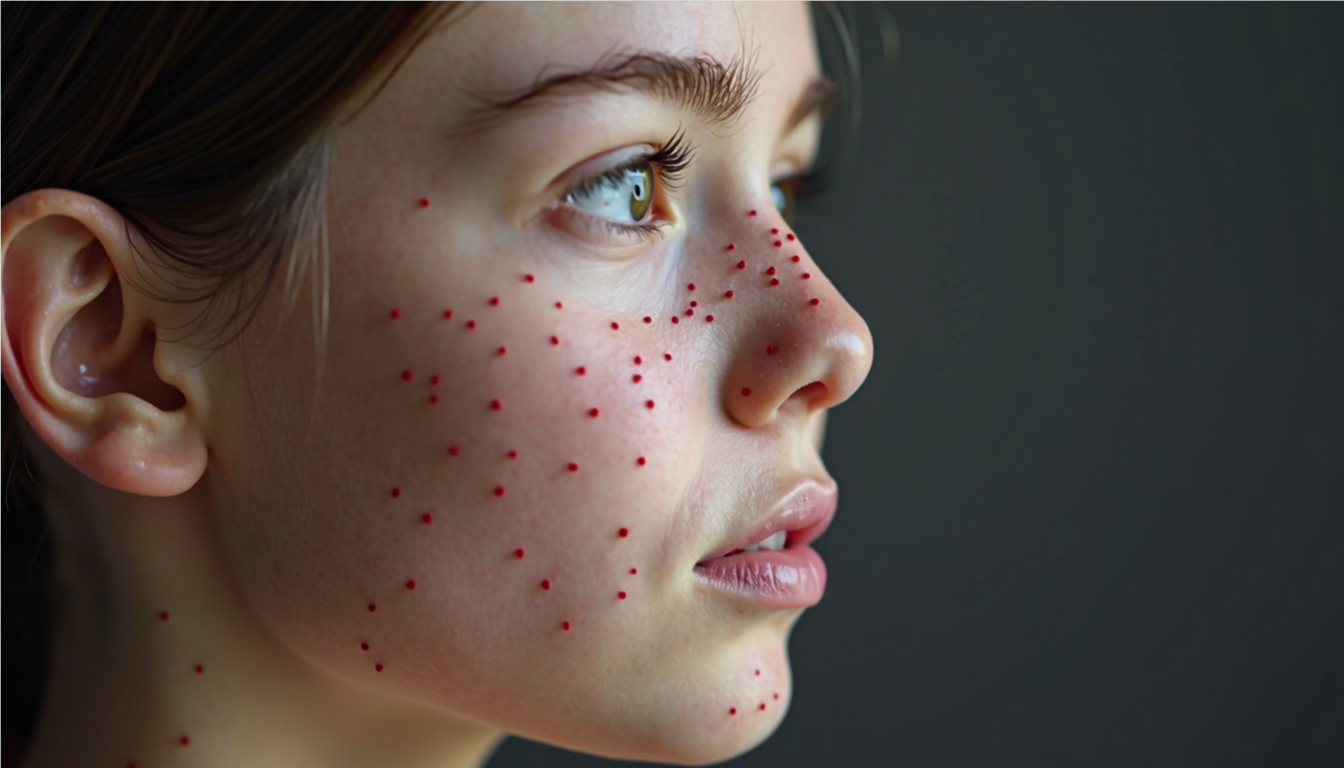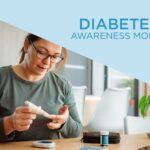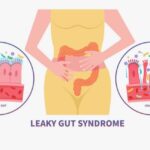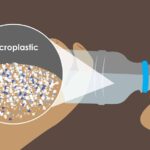Introduction to Acne vulgaris (common acne):
Waking up and find an unexpected Acne breakout right before an important event, something many people have experienced at some point in their lives. The condition is introduced as one of the most common yet frustrating skin issues, affecting millions worldwide across various age groups and backgrounds.
Many individuals struggle with self-confidence and self-esteem due to persistent Acne and Pimples breakouts on their skin, making it more than just a cosmetic concern.
In this Article, will educate you about all aspects of this skin condition. its actual causes, symptoms, and the most effective treatment options available.
What is Acne Vulgaris?
Acne vulgaris is a chronic skin disorder that occurs when hair follicles get clogged with oil (sebum), dead skin cells, and bacteria. This blockage can lead to various types of lesions, including blackheads, whiteheads, and inflammatory pimples.
The role of sebaceous glands is crucial in maintaining skin health. However, when these glands produce excessive sebum, it can mix with dead skin cells and create an environment conducive to bacterial growth.
A common misconception that acne only affects teenagers is addressed. While it is most prevalent during adolescence age due to hormonal changes, adults of all ages can also suffer from acne, sometimes even into their 40s and 50s.
Then what is Causes of Acne:
Acne vulgaris has multiple causes, let’s understand them to choose effective treatment options. One of the primary factors is excess sebum production. Overactive sebaceous glands can produce too much oil, leading to clogged pores and breakouts.
Also a significant role play by Bacterial infections called Cutibacterium acnes or Propionibacterium acnes that is ‘P.Acne’ on the skin can exacerbate acne by triggering inflammation and pus-filled pimples.
Hormonal changes contribute significantly to acne flare-ups. Fluctuations in hormone levels can lead to increased oil production, making breakouts more likely, especially during puberty, pregnancy, menstruation, or stressful periods, Hyper-androgenic state in females as in P C O S.
Diet and lifestyle choices can influence Acne Vulgaris severity. Consuming high-glycemic foods like sugary and processed items, as well as dairy products, has been linked to worsening acne. Poor skincare habits, such as infrequent cleansing or using harsh products, can also aggravate breakouts.
Some Environmental factors like pollution, humidity, and exposure to certain cosmetic or hair products can contribute to clogged pores and increased Acne Vulgaris severity. Understanding these causes helps individuals take better preventive measures.
Symptoms and Types of Acne:
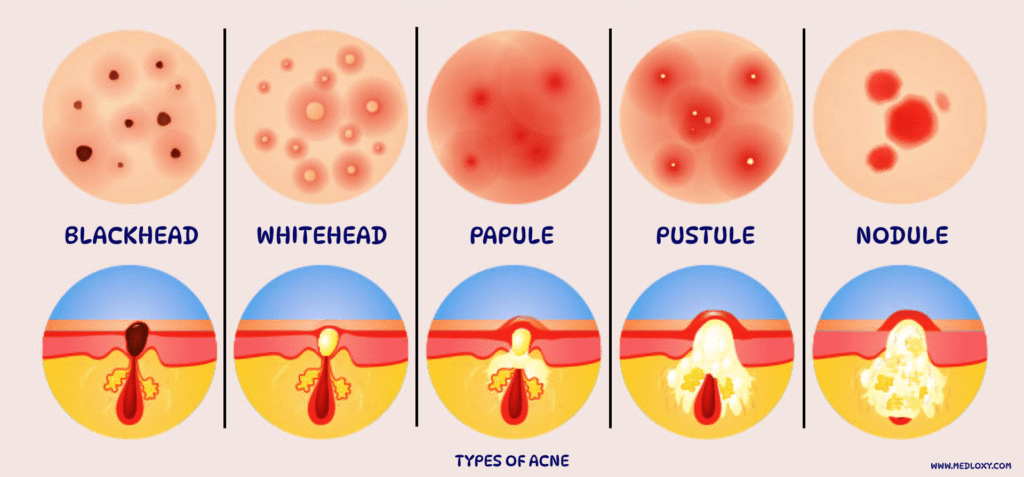
Acne Vulgaris can appear in different forms, ranging from mild to severe.
According to Pathophysiology & Pathomophology, It is broadly categorized into non-inflammatory and inflammatory acne.
Non-inflammatory acne includes whiteheads and blackheads.
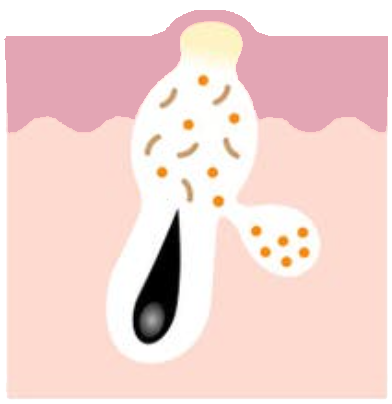
Whiteheads, also known as closed comedones, appear as small, flesh-colored bumps caused by clogged pores.
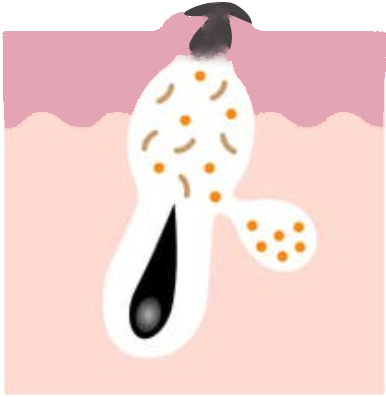
Blackheads, or open comedones, have a dark surface due to the oxidation of trapped debris and sebum.
Inflammatory acne is more severe and includes different types of pimples.
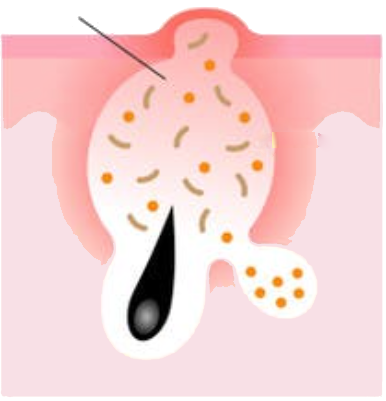
Papules are small, red, and tender bumps caused by inflamed follicles.
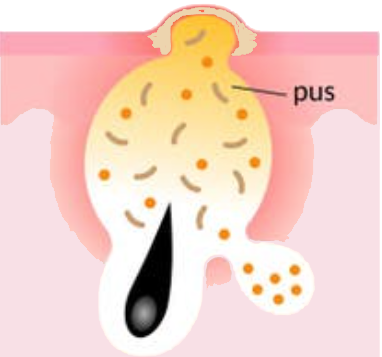
Pustules are pimples filled with pus, often appearing white or yellow at the tip. Such Acne known as Pustular Acne – It is Folliculocentric abscess surrounded by dense inflammatory exudates of lymphocytes and other WBC’s
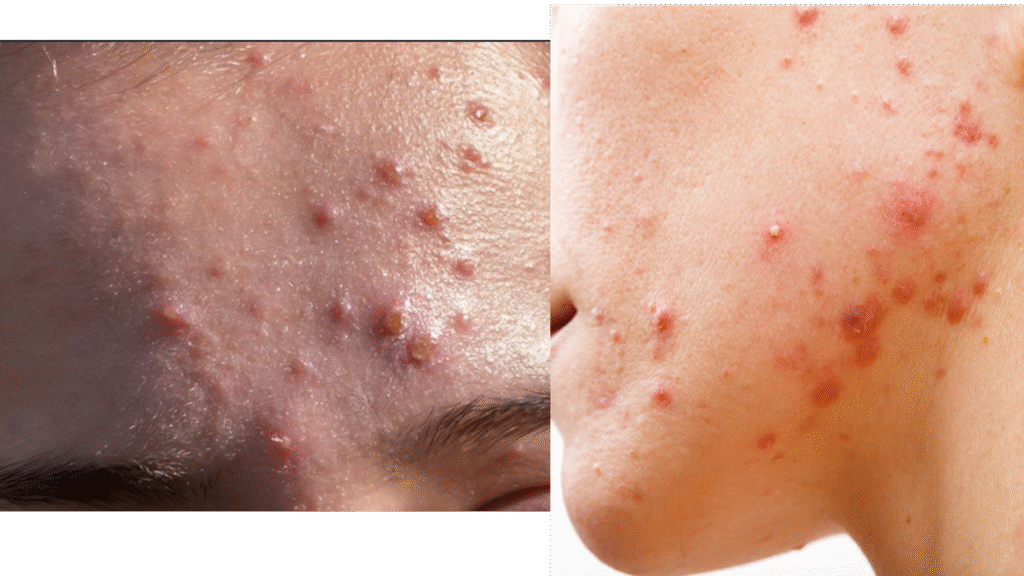
Nodules are large, painful lumps beneath the skin that do not contain pus, Such Acne Known as Nodular acne – it is Indolent, contain plasma cells, foreign body Giant cells, proliferation of fibroblast.
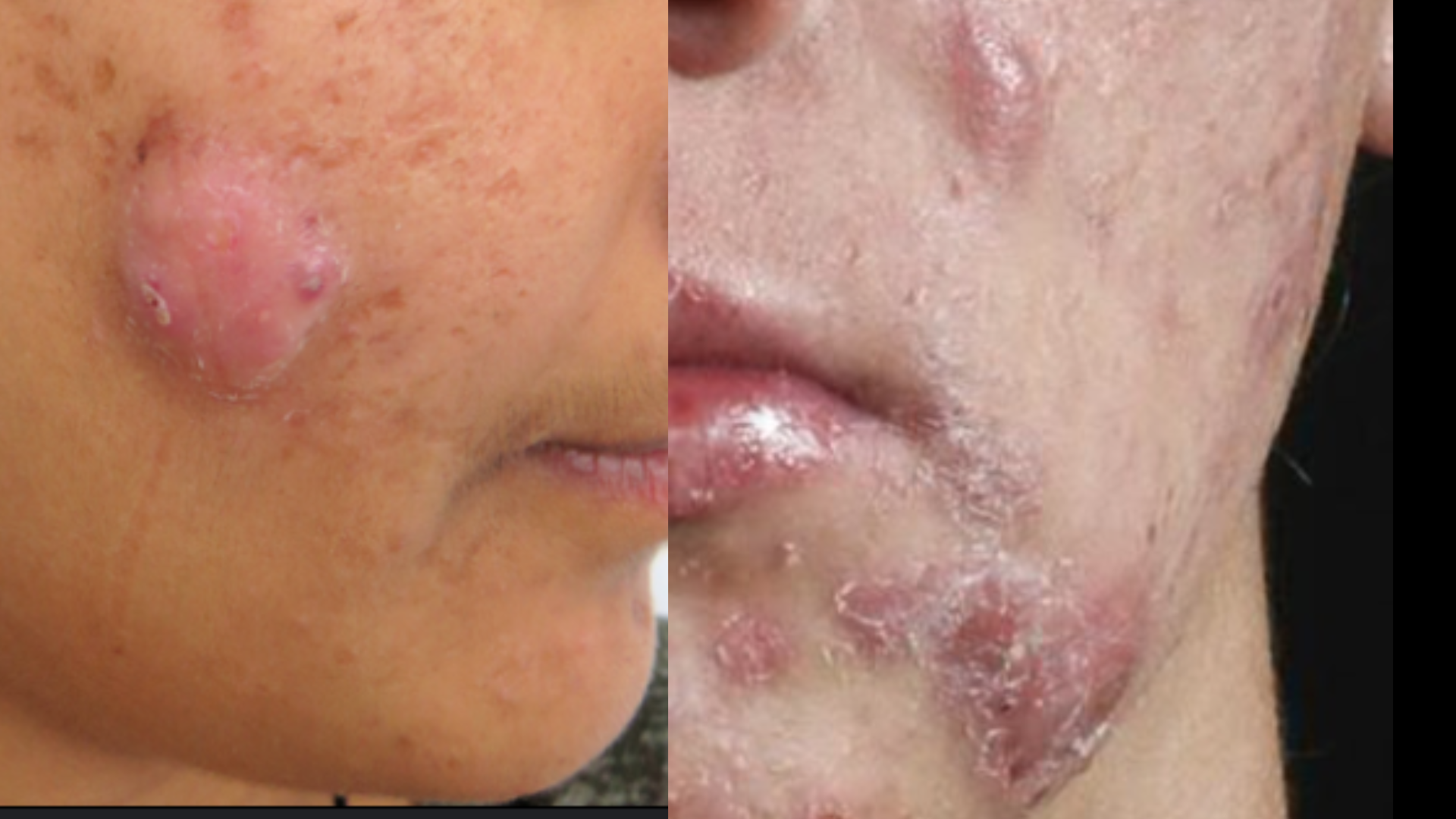
while Cysts are deep, pus-filled lesions that can cause scarring if not treated properly.
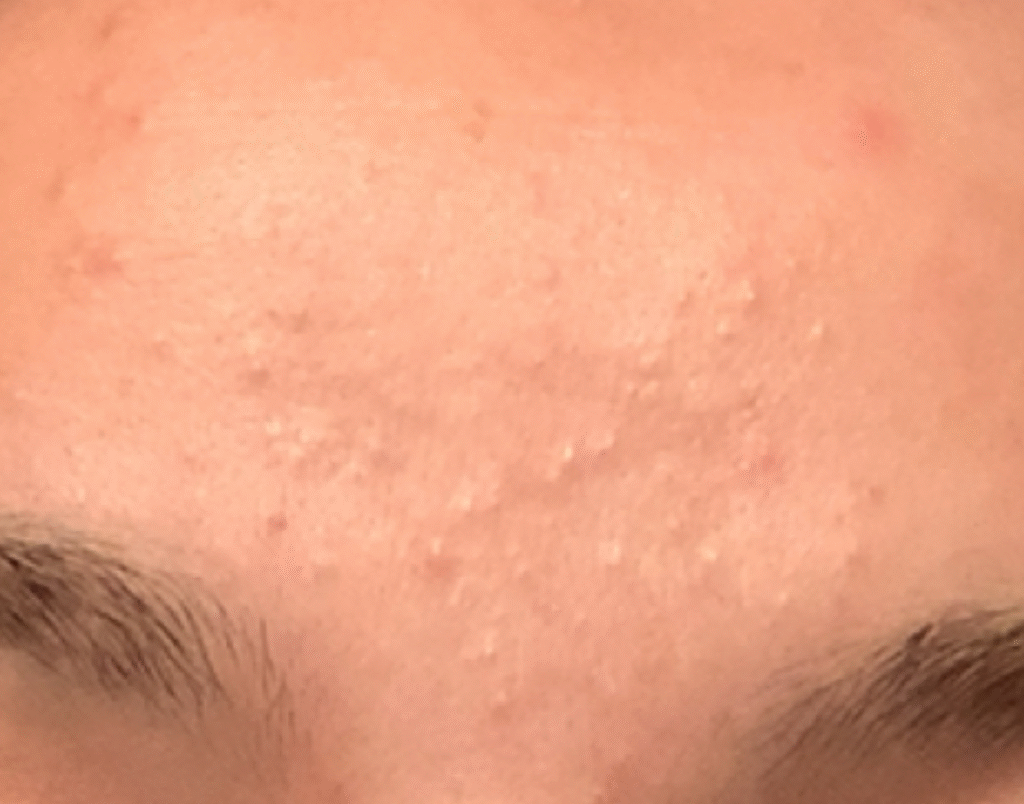
Comedones – Comedones are clogged hair follicles (pores) in the skin, which can be open (blackhead) or closed (whitehead)
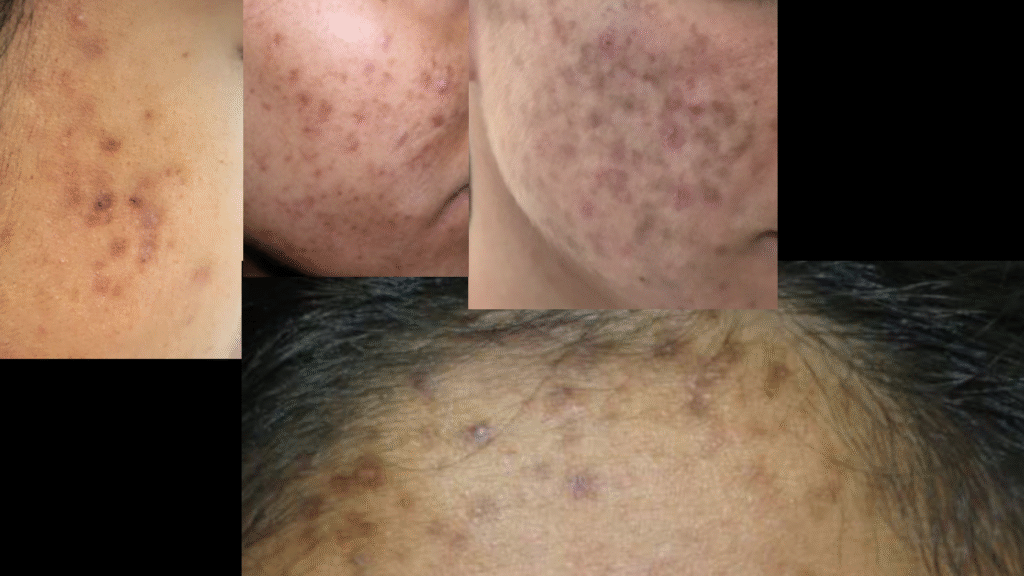
Acne can also have long-term effects, such as hyperpigmentation and scarring.
ie, its an important to take early action to prevent severe breakouts from leaving permanent marks on the skin.
Recognizing different acne types helps you choose the right treatments to manage any mentioned condition effectively.
What Over-the-Counter Treatment is available?
Mild to moderate acne can often be managed using over-the-counter treatments, which are easily available and generally safe for regular use.
One of the most effective ingredients is benzoyl peroxide, it is an antibacterial agent that helps kill acne-causing bacteria and reduces inflammation. It is available in various strengths and can be found in cleansers, gels, and spots treatments.
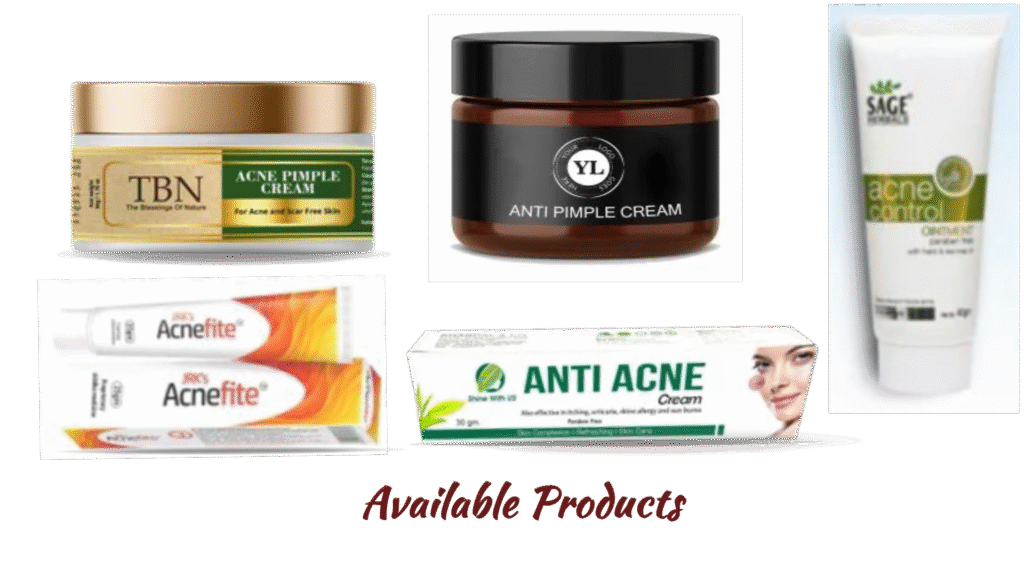
Another popular treatment is salicylic acid, a beta-hydroxy acid (BHA) that exfoliates the skin and helps unclog pores by removing dead skin cells. This makes it particularly effective for blackheads and whiteheads. Regular use of salicylic acid can prevent new breakouts and improve skin texture over time.
Retinoids, such as Adapalene, are also highlighted for their role in accelerating cell turnover. By preventing clogged pores and reducing inflammation, retinoids can be highly effective for long-term acne management. However, they may cause initial irritation and dryness, making it important to introduce them gradually.
Niacinamide
Reduces inflammation and acne-related redness. It is also often present in many serums and moisturizers.
You are advised to choose non-comedogenic skincare products to prevent further clogging of pores. Gentle cleansers and lightweight, oil-free moisturizers are recommended to maintain a healthy skin barrier while undergoing acne treatments.
Prescription and Medical Treatments
For those struggling with persistent or severe acne that does not respond to over-the-counter treatments, prescription medications can offer more targeted, accurate and powerful solutions.
- ACNE VULGARIS AGENTS
- Adapalene DIFFERIN
- Azelaic acid AZELEX
- Benzoyl peroxide VARIOUS Isotretinoin VARIOUS
- Tazarotene TAZORAC
- Tretinoin RETIN-A
- TOPICAL ANTIBACTERIAL AGENTS
- Bacitracin
- Clindamycin CLEOCIN T
- Dapsone ACZONE
- Erythromycin BENZAMYCIN
- Gentamicin
- Mupirocin BACTROBAN
- Neomycin (with bacitracin and polymyxin B) TRIPLE ANTIBIOTIC
- Retapamulin ALTABAX
Topical antibiotics like clindamycin and erythromycin help combat Acne due to bacterial infections and reduce inflammation when applied directly to affected areas. These are often combined with benzoyl peroxide to enhance effectiveness and prevent antibiotic resistance.
Oral antibiotics, such as doxycycline and minocycline, may be prescribed for more widespread or severe acne. These work by reducing inflammation and controlling bacterial growth inside the body.
Hormonal therapy is a viable option for women dealing with hormonal acne. Birth control pills can help regulate hormone fluctuations, while anti-androgens like spironolactone reduce excess androgen production, which can contribute to breakouts.
Isotretinoin (commonly known as Accutane) is a powerful treatment reserved for severe acne. It works surprisingly good by reducing sebum production, preventing clogged pores, and minimizing inflammation. However, it requires medical supervision.
Conclusion:
Acne is treatable with the right combination of treatments and lifestyle adjustments. Talk to your doctor if you are struggling.
